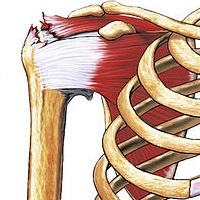
Photo from wikipedia
Study design: Retrospective study. Objective: The purpose of the study was to analyze the epidemiological parameters and associated factors after spinal cord injury (SCI) in children, in the last 14… Click to show full abstract
Study design: Retrospective study. Objective: The purpose of the study was to analyze the epidemiological parameters and associated factors after spinal cord injury (SCI) in children, in the last 14 years admitted at a tertiary care center (Indian Spinal Injury Centre [ISIC], New Delhi, India). Method: The demographic and injury-related data was analyzed descriptively. The incidence, type, and level of injury were compared across the age groups using a χ2 test. Wherever appropriate, Fisher exact test was used. Results: There were 1660 pediatric trauma cases admitted at ISIC from 2002 to 2015, where 204 cases presented with spine injuries. The average age of children sustaining spine injury was 15.69 years (3-18 years of range). There were 15 patients in the age group 0 to 9 years, 27 patients in the age group 10 to 14 years, and 162 patients in the age group 15 to 18 years. This difference in spine injury incidence among the age groups was statistically significant. Fall from height was a common mode of injury. In our sample, boys were 3 times more likely to be injured than girls. Burst fractures were common among the type of injuries. Conclusion: Our study confirms the predominance of cervical spine injury and the high incidence of multilevel contiguous with a lesser percentage of noncontiguous multilevel spinal involvement. SCIWORA (spinal cord injury without radiological abnormality) incidences were in a similar context to the literature available. There was a very low incidence of death. Neurological improvement was seen in 8 operated cases and 4 conservatively treated cases.
Journal Title: Global Spine Journal
Year Published: 2019
Link to full text (if available)
Share on Social Media: Sign Up to like & get
recommendations!